Abstract
Rhizobium japonicum serotype 123 was enumerated in soil and rhizospheres by fluorescent antibody techniques. Counting efficiency was estimated to be about 30%. Indigenous populations of strain 123 ranged from a few hundred to a few thousand per gram of field soil before planting. Rhizosphere effects from field-grown soybean plants were modest, reaching a maximum of about 2 × 104 cells of strain 123 per g of inner rhizosphere soil in young (16-day-old) plants. Comparably slight rhizosphere stimulation was observed with field corn. High populations of strain 123 (2 × 106 to 3 × 106 cells per g) were found only in the disintegrating taproot rhizospheres of mature soybeans at harvest, and these populations declined rapidly after harvest. Pot experiments with the same soil provided data similar to those derived from the field experiments. Populations of strain 123 reached a maximum of about 105 cells per g of soybean rhizosphere soil, but most values were lower and were only slightly higher than values in wheat rhizosphere soil. Nitrogen treatments had little effect on strain 123 densities in legume and nonlegume rhizospheres or on the nodulation success of strain 123. No evidence was obtained for the widely accepted theory of specific stimulation, which has been proposed to account for the initiation of the Rhizobium-legume symbiosis.
Full text
PDF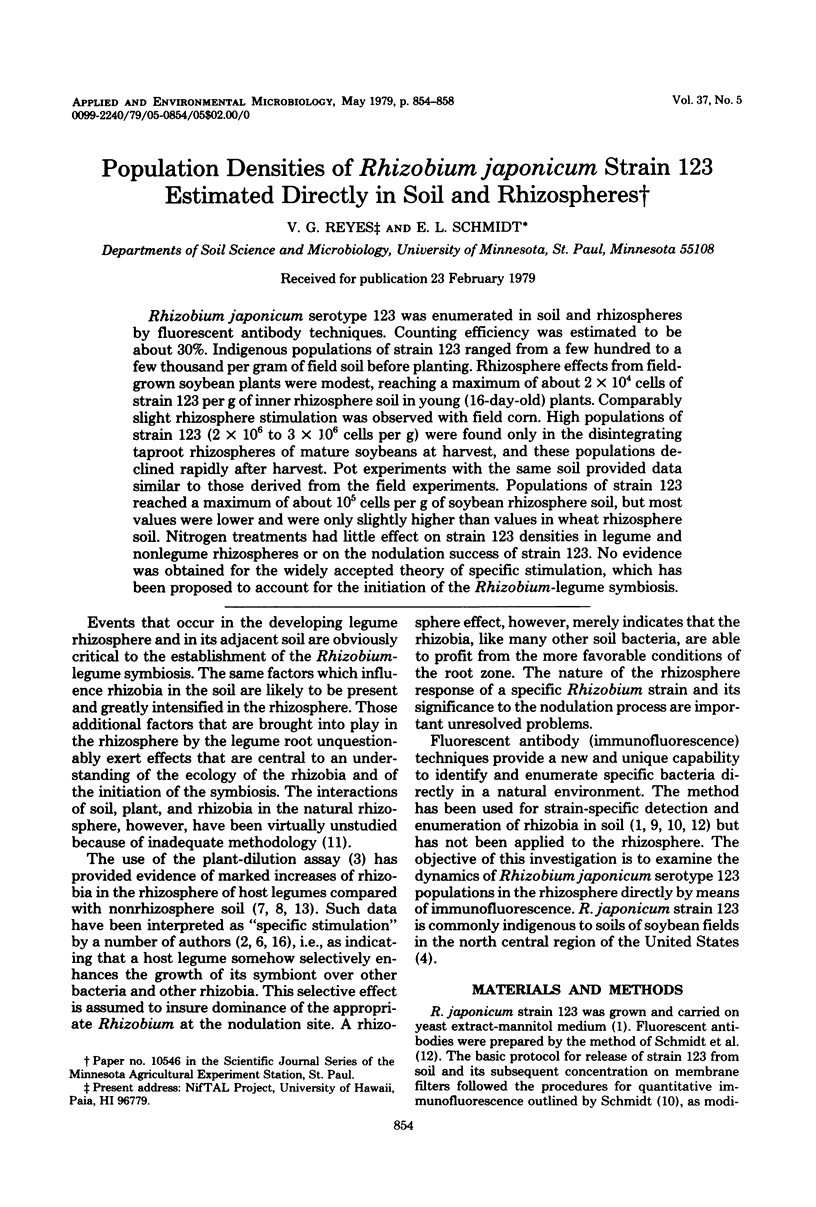
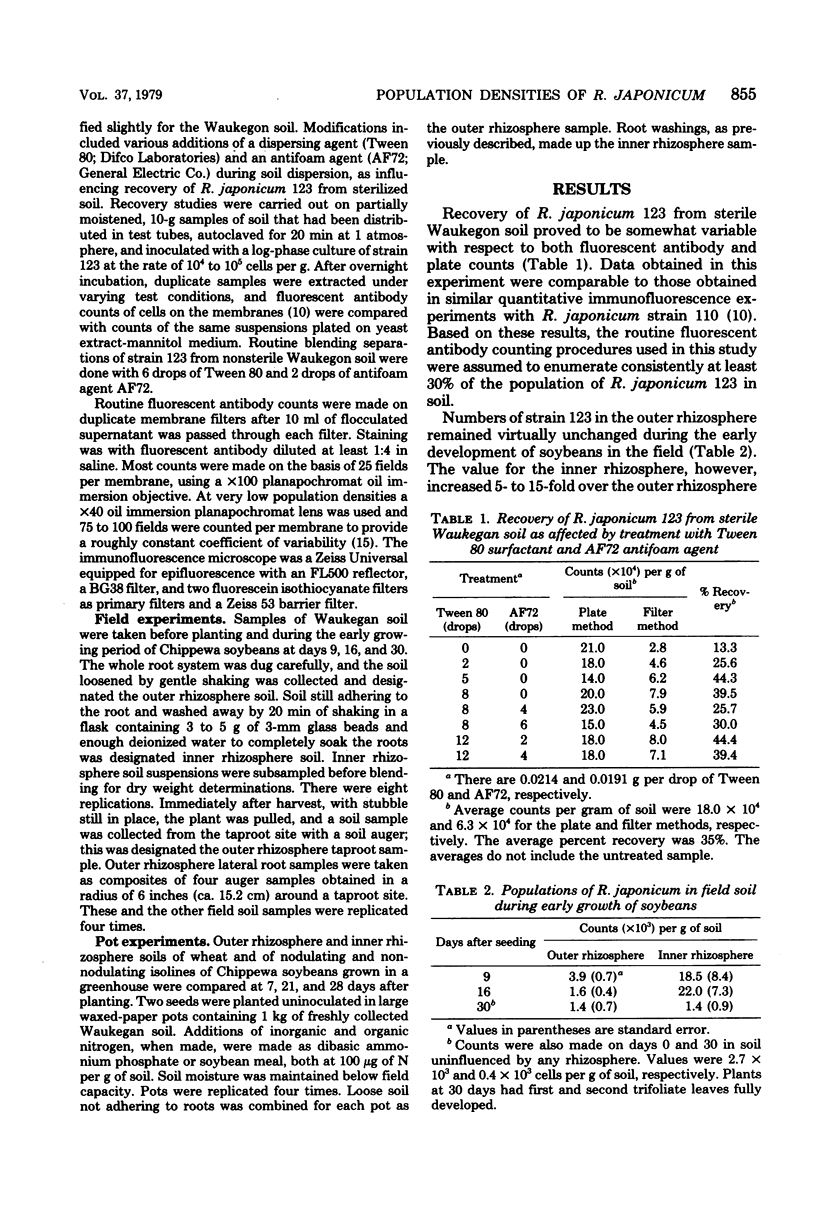
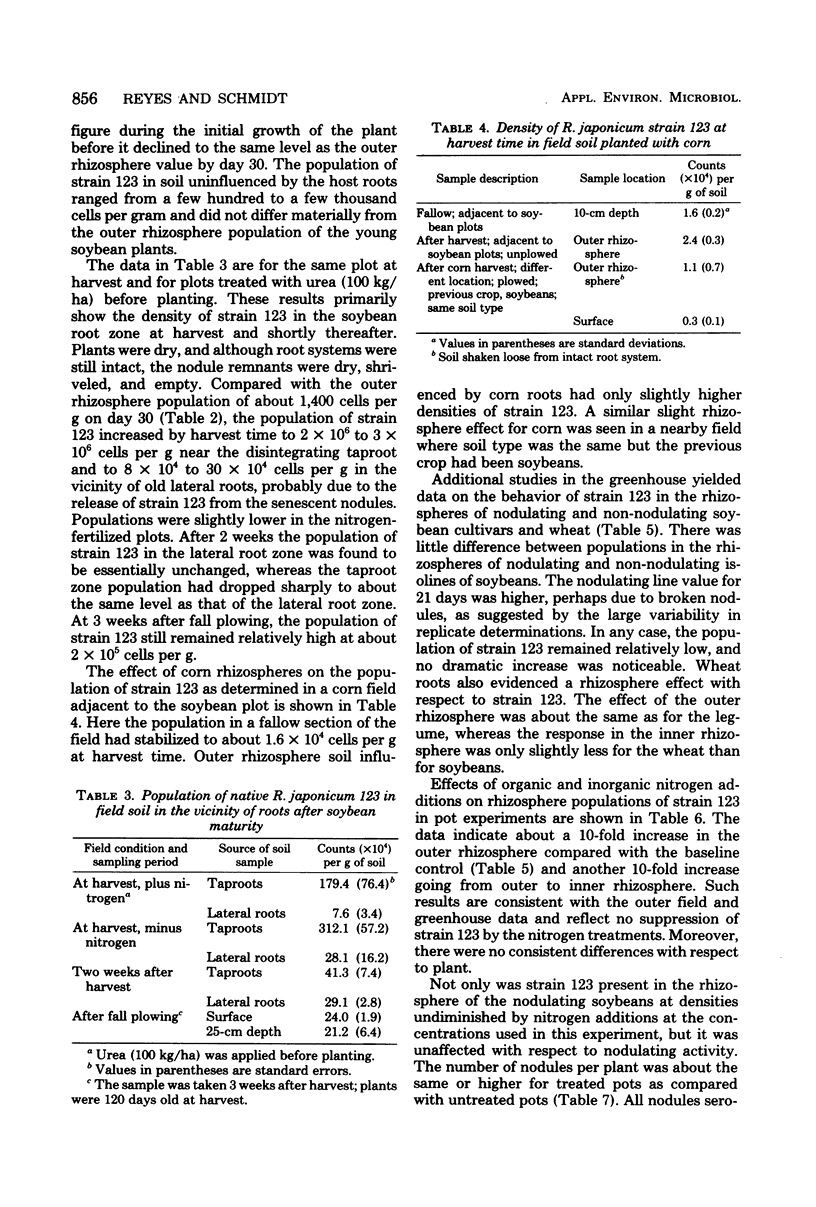
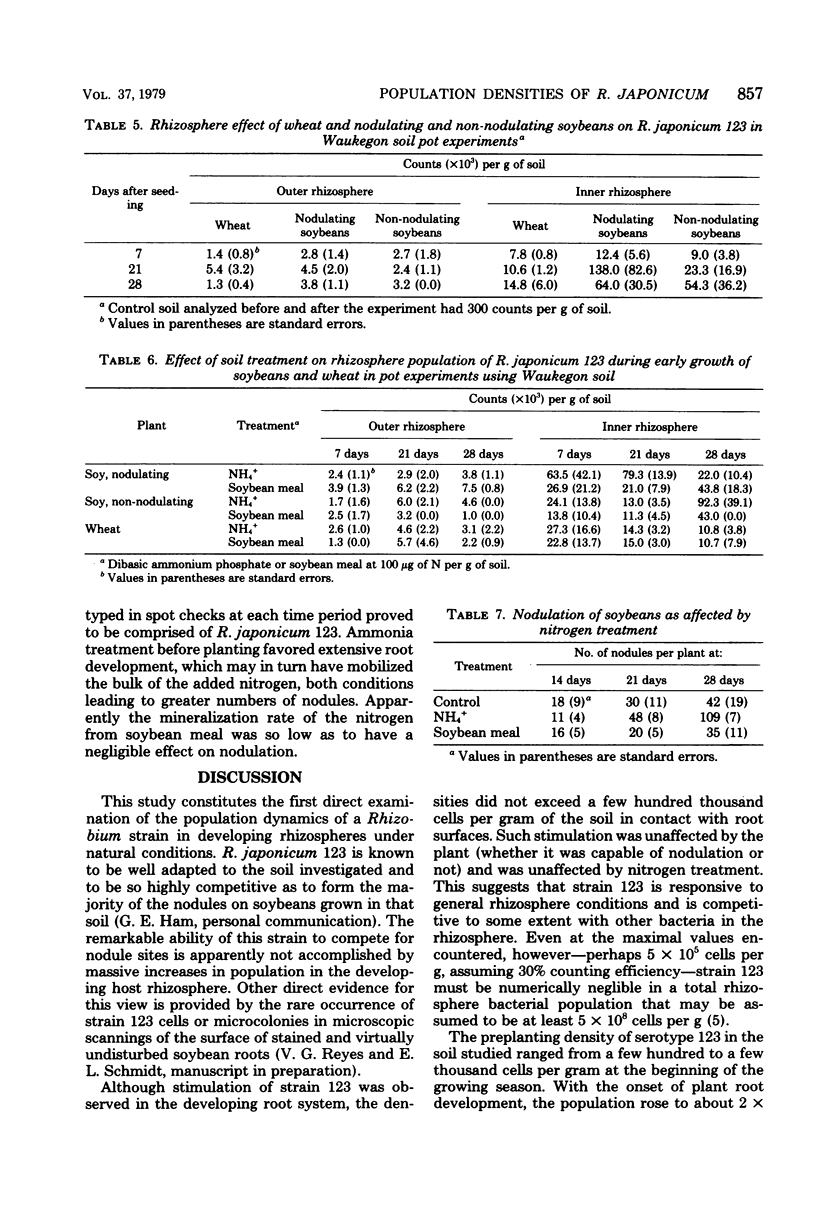
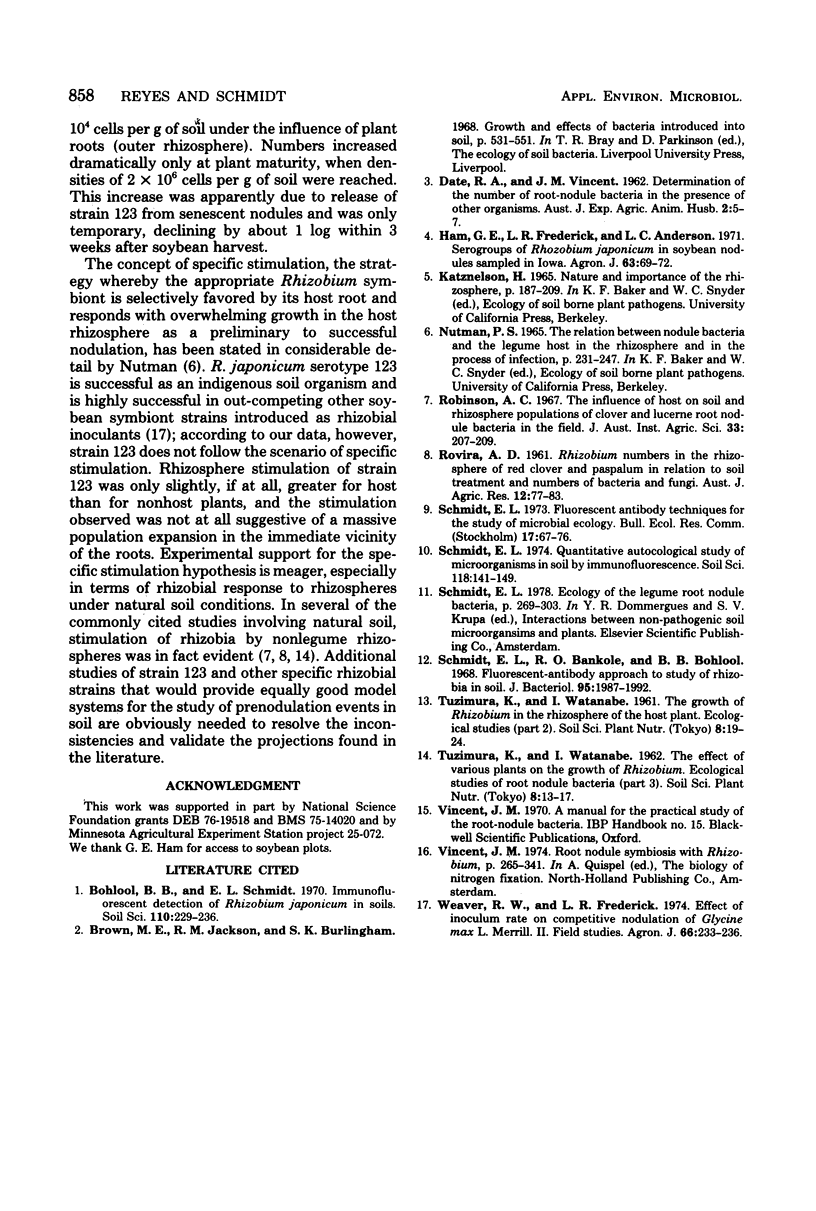
Selected References
These references are in PubMed. This may not be the complete list of references from this article.
- Schmidt E. L., Bakole R. O., Bohlool B. B. Fluorescent-antibody approach to study of rhizobia in soil. J Bacteriol. 1968 Jun;95(6):1987–1992. doi: 10.1128/jb.95.6.1987-1992.1968. [DOI] [PMC free article] [PubMed] [Google Scholar]


